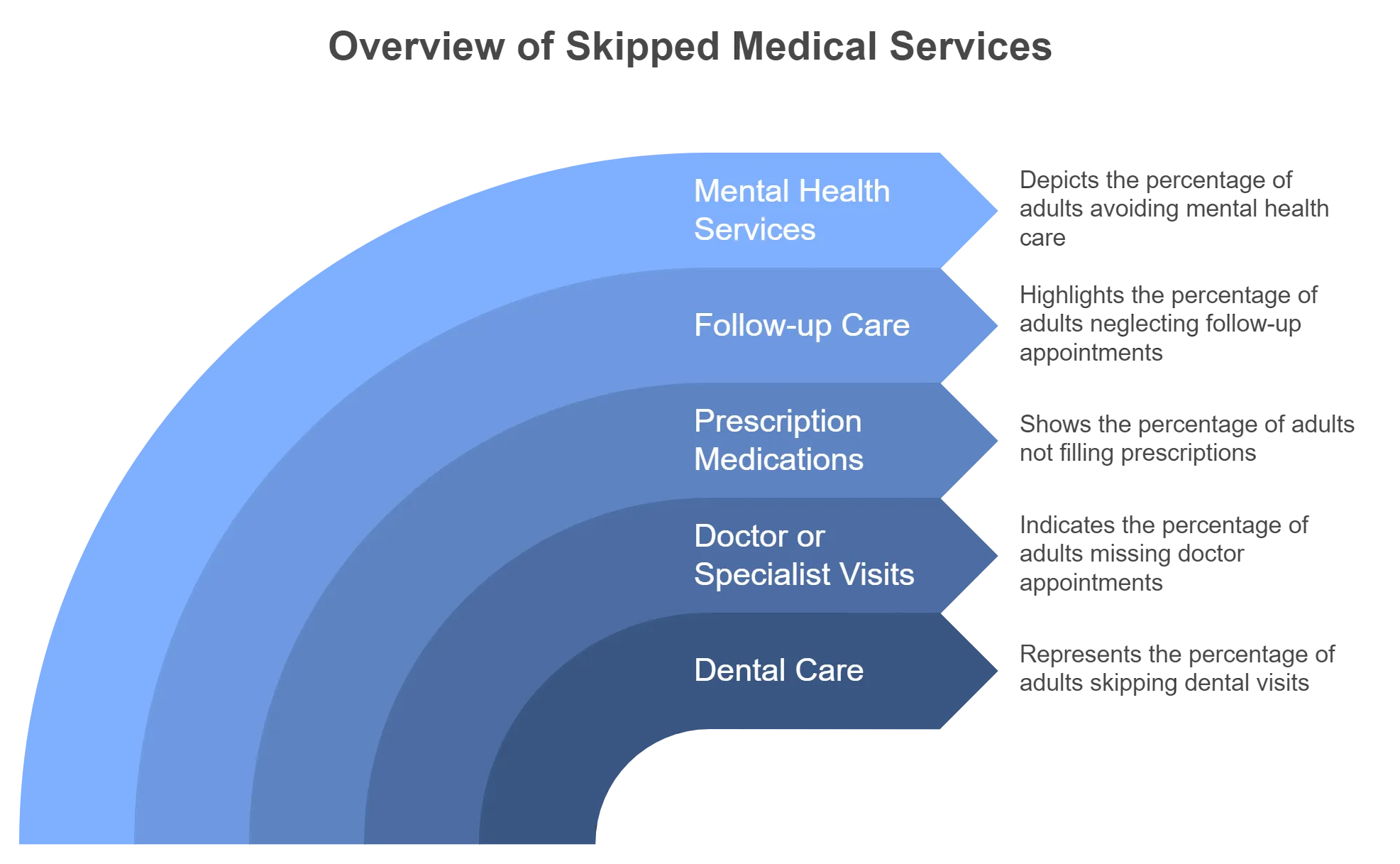Healthcare Cost Crisis: 27% of Americans Skip Medical Treatment in 2024
- 21 Oct, 2024

Executive Summary
In 2023, a staggering 27% of American adults reported skipping necessary medical treatment because of costs. This issue highlights a serious healthcare accessibility crisis in the U.S. While this number is down from 32% in 2013, it still poses a major public health concern. Millions of Americans, especially those with lower incomes, are affected.
The Scale of Healthcare Avoidance
Current Landscape
- 27% of American adults skipped medical treatment in 2023 due to costs.
- 42% of individuals with family incomes under $25,000 avoided care.
- Only 12% of those earning over $100,000 reported skipping treatment.
- 26.2 million Americans (7.9% of the population) lack health insurance.
Most Commonly Skipped Medical Services

The Insurance Gap
Impact of Insurance Status
- 46% of uninsured adults skipped medical treatment.
- 25% of insured adults reported avoiding care.
- Only 0.8% of adults aged 65 and older lack insurance.
- 11% of adults aged 19-64 remain uninsured.
- 5.4% of Americans under 19 have no health coverage.
Financial Burden and Medical Debt
Cost Impact Analysis
- 23% of adults faced unexpected medical expenses in 2023.
- Median unexpected medical costs ranged from $1,000 to $1,999.
- 17% reported medical debt from personal or family care.
- Lower-income households face a heavier financial strain.
Long-term Health Implications
Preventative Care Gap
- Reduced access to primary care for the uninsured.
- Lower rates of preventative screenings.
- Delayed diagnosis of serious conditions.
- Increased risk of preventable complications.
- Higher likelihood of emergency room visits.
Demographic and Geographic Disparities
Key Factors Influencing Healthcare Access
- Income level
- Geographic location (rural vs. urban)
- Employment status
- Age demographics
- Educational background
- Immigration status
Solutions and Policy Initiatives
Current Programs
- Medicaid expansion efforts
- Affordable Care Act marketplace subsidies
- State-level healthcare initiatives
- Community health center programs
- Prescription drug assistance programs
Proposed Reforms
- Universal healthcare proposals
- Medicare expansion options
- Drug pricing reforms
- Healthcare cost transparency initiatives
- Insurance market reforms
Preventative Strategies for Individuals
Managing Healthcare Costs
- Understand insurance options and coverage.
- Utilize preventative care benefits.
- Explore payment plan options.
- Access community health resources.
- Investigate prescription assistance programs.
Future Outlook
Emerging Trends
- Telemedicine adoption
- Direct primary care models
- Value-based care initiatives
- Healthcare technology innovations
- Policy reform proposals
Recommendations
For Policymakers
- Expand insurance coverage options.
- Strengthen consumer protections.
- Address healthcare price transparency.
- Support preventative care initiatives.
- Reform drug pricing systems.
For Healthcare Providers
- Implement sliding scale payment options.
- Enhance price transparency.
- Develop patient assistance programs.
- Improve communication about costs.
- Partner with community resources.
Conclusion
While we've made strides in reducing the number of Americans skipping medical care due to costs, challenges remain. The gap between healthcare needs and affordability continues to affect public health, especially among vulnerable groups. Tackling this crisis requires a multi-faceted approach. We need policy reform, innovative healthcare delivery, and better support systems for at-risk populations.
.webp&w=256&q=75)

